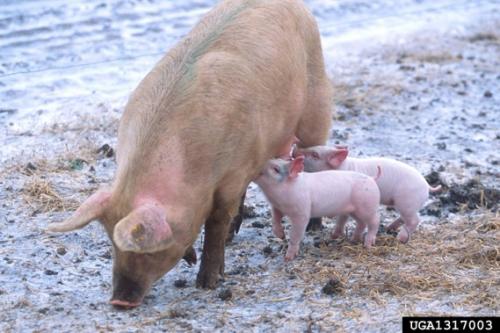Scotland’s pork sector is under financial pressure. One way to address this could be to increase the value added to Scottish pork. This case study, which focusses on a Scottish pork producer, provides insights into an enterprise serving the high value pork products market and the challenges it faces.
This is one of three reports on different aspects of the high value pork market. The others are a case study examining attributes for which consumers appear willing to pay and a model to help calibrate trade-offs producers may need to make. Highlighting where efficiencies can be made in producing pork and adding value to the final product could improve the resilience of farmers and smaller, independent processors and retailers, and hence of Scotland’s rural economy.

Stage
Directory of Expertise
Purpose
Producers’ participation in the Scottish pork sector has decreased in recent years, due to financial pressures on sale and export prices and increasing input costs, notably for ingredients, energy, and wages. This research, which is part of the project 'Costs and opportunities for Scottish products with higher value status', aimed to assist the sector by reviewing the costs and opportunities for higher value Scottish pork products.
This research had three objectives:
1. Examine producers’ views on issues affecting Scotland’s higher value pork sector (the subject of this case study);
2. Analyse consumers’ willingness to pay for higher value Scottish pork products;
3. Produce a trade-off analysis model for the pig to pork supply chain in Scotland.
It is hoped that these reports will provide ideas and analysis that will help Scottish pork producers, processors and retailers, and thereby contribute to the resilience of Scotland’s rural economy.
Results
Informed by a review of previous research and data, we spoke to pork farmers, processors, and butchers about what they produce, the prices they receive for their products and their input costs. We also asked for their views on: the pros and cons of assurance labels, such as Specially Selected Pork and organic; the current policy and trade environments; and the value of networking to their business. Here, we focus on a single farm to illustrate issues affecting high value pork production.
This organic, family-owned farm keeps sows, as well as cows and sheep. The farmer has a high environment, high welfare business philosophy and has Soil Association and Pasture for Life certification. Furthermore, they have introduced several innovations to improve the farm’s natural environment and prosperity for the long term. Two of the most important are:
- Buying in live sows instead of breeding them. Pig breeding was damaging their soil and they lack sufficient land to raise enough pigs to meet customer demand.
- Opening an on-farm butchery to make sausages and salamis using parts of the sows that would otherwise go to waste. Pork products account for more than half of the processing done by the butchery, which has eight full-time employees.
By diversifying into butchery this farmer has been able to satisfy increasing demand for organic pork products, use more of their animals, create employment, and provide a valuable market for organic breeders’ sows. For customers, their accreditation provides independent assurance that their pork products are produced to high environmental standards.
However, while demand for their organic, high-welfare pork products has increased, there is no longer a consistent Scottish organic sow supply. The farmer is confronted with a dilemma: transport live sows into Scotland; purchase organic pork for processing; or cease production of organic pork products. None of these fits their business philosophy.
A poster ‘Costs and opportunities for Scottish products with higher value status’ was displayed at the Theme B5 meeting in Edinburgh on 17 March 2023.
Benefits
This case study indicates that there is demand for high value Scottish pork products. This is consistent with the finding from our previous case study, that consumers are willing to pay a price premium for assured, high quality pork products from Scotland. However, this case study also indicates that the declining number of participants in Scotland’s pork sector is making it harder to satisfy demand. There is no easy means of reversing that decline. However, our recent report may aid decision-making in this area, as it presents a model that can be used to approximate the impact of changes in variables such as input and output prices on the level of Scottish pork production.
The red meat supply chain employs more than 50,000 people and generates over £2 billion economic benefit for Scotland’s economy. Highlighting where efficiencies can be made in producing pork and how value can be added to the final product could improve the economic resilience of farmers and smaller, independent processors and retailers. We hope that our three reports will help the Scottish pork sector in its ongoing efforts to do this. Doing so could contribute towards employment and economic value generated by Scotland’s rural economy.
Project Partners
This research was funded by the Scottish Government’s Environment, natural resources and agriculture - strategic research 2022-2027 programme, and is part of the project 'Costs and opportunities for Scottish products with higher value status'. The project is overseen by a Steering Group containing policy and industry specialists.